Current Trends for HIV in Ontario
OHESI produces regular blog posts and reports to analyze patterns in HIV testing, diagnoses and the HIV care cascade. Scroll down for current trends on key indicators. Check out our data blog and reports for in depth analyses.
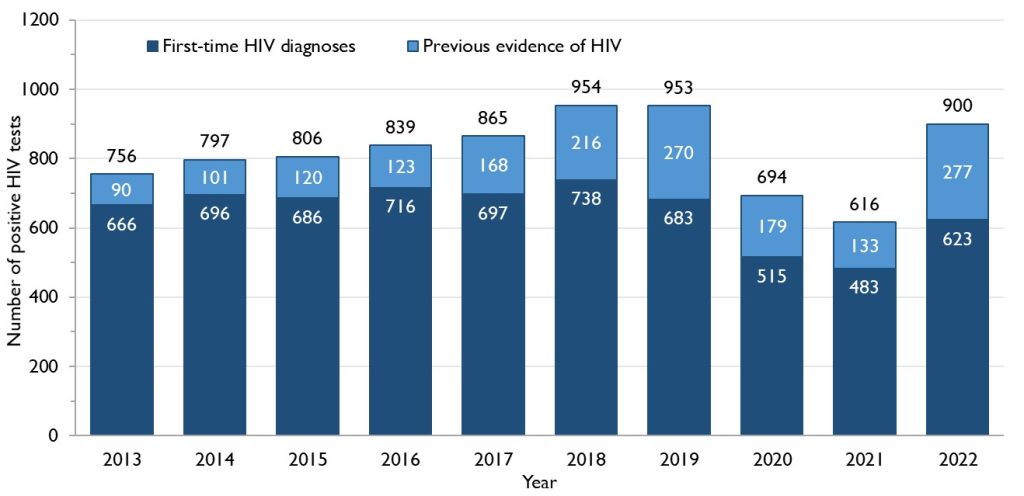
First-time HIV diagnoses and Persons with Previous Evidence of HIV, by year, Ontario
Both first-time HIV diagnoses and diagnoses with previous evidence of HIV were up in 2022 compared to 2020 and 2021, but first-time HIV diagnoses were down compared to 2019. There were 623 first-time HIV diagnoses and 277 diagnoses with previous evidence of HIV in 2022.
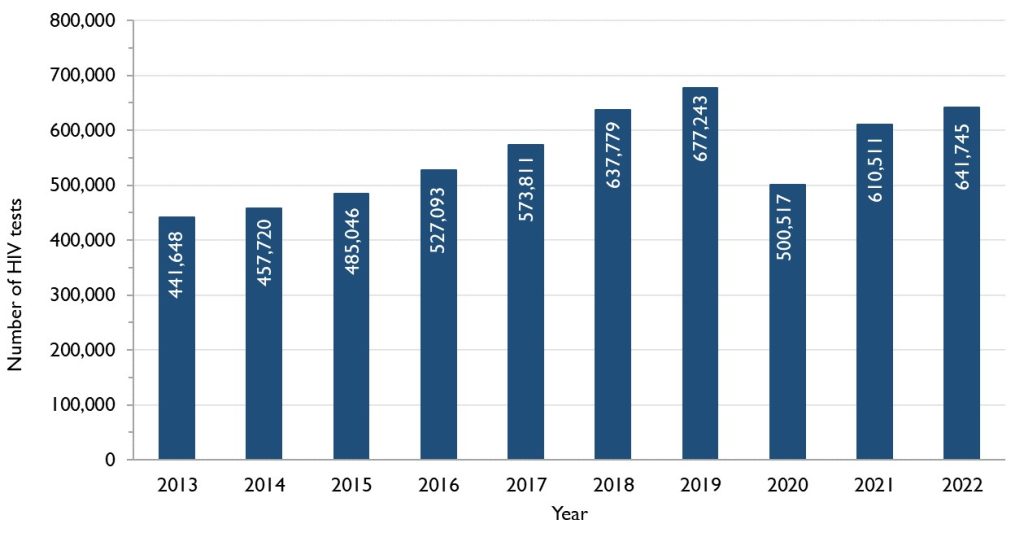
HIV diagnostic tests, by year, Ontario
After a significant (25%) drop in HIV testing (excluding prenatal tests) at the height of the COVID-19 pandemic (2020), the number of tests continued to recover in 2022 but remained 5% lower than the 10-year high in 2019.
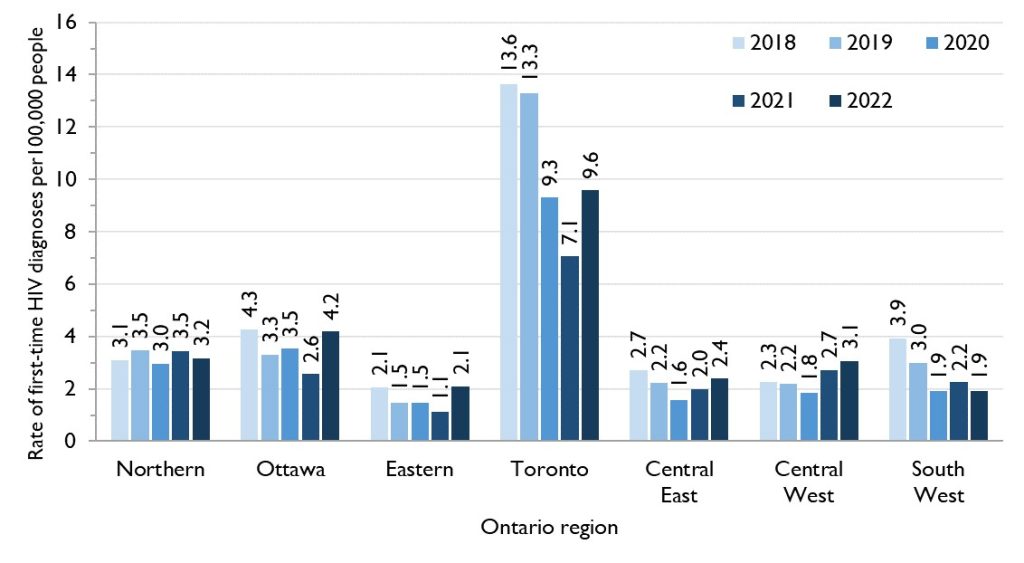
Rate of first-time HIV diagnosis per 100,000 people, by Ontario Health Region
South West, Toronto and Northern regions all saw a decrease in the rate of first-time HIV diagnoses per 100,000 people in 2022 compared to 2019. There was a 7% increase in the rate of first-time HIV diagnoses in the Central East region while Ottawa, Eastern and Central West regions saw an increase of 27%-40% in 2022 compared to 2019. While Toronto had the highest rate of first-time HIV diagnoses, it had the second largest decline compared to 2019.
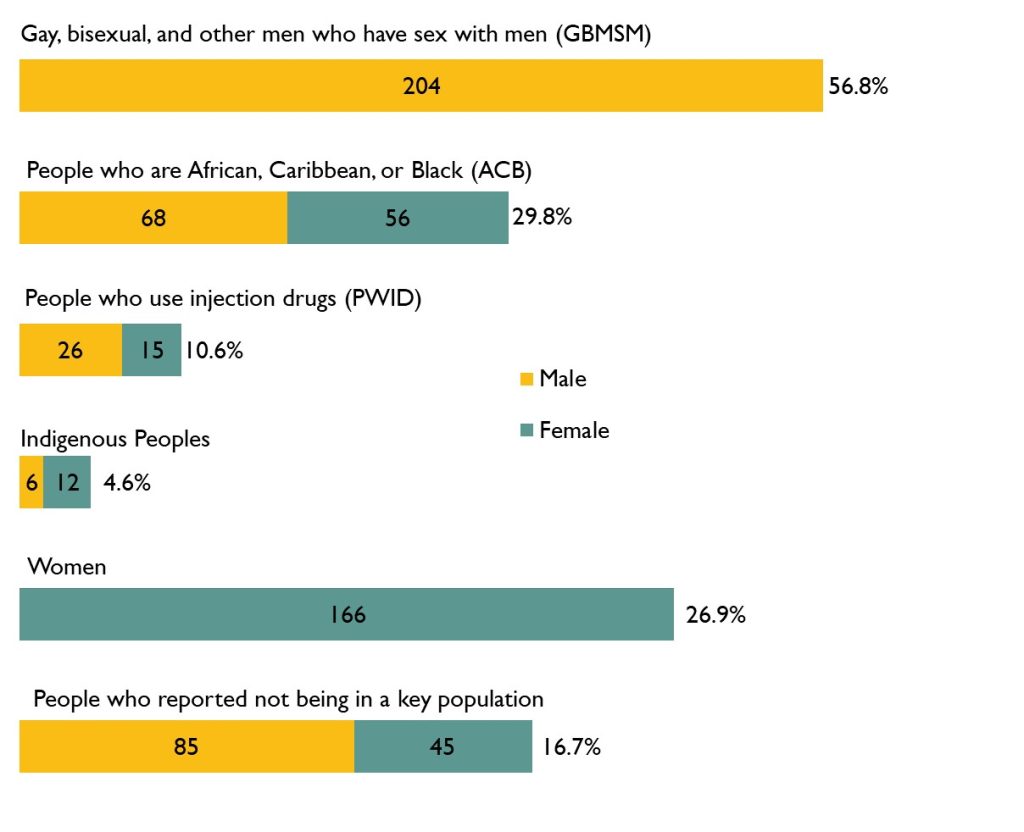
First-time HIV diagnoses by Ontario Key Population, 2022
From the beginning of the HIV epidemic, Ontario recognized that certain populations – defined by sexual identity, demographic characteristics (including country of birth and race/ethnicity), behaviour or social/systemic factors – bore a disproportionate burden of HIV. To reduce HIV transmission and improve health outcomes, Ontario’s HIV response has focused on these “key” populations for HIV programming in Ontario’s response to HIV. Unlike HIV exposure categories, the key populations are not mutually exclusive and therefore a diagnosis from a single individual can be assigned to more than one key population (if applicable) and each key population has its own denominator. Gay, bisexual, and other men who have sex with men (GBMSM) continue to account for the greatest number (204) and proportion (56.8%) of first-time HIV diagnoses followed by people who are African, Caribbean, and Black (29.8%), Women (26.9%), people who use injection drugs (10.6%) and Indigenous Peoples (4.6%). 16.7% of first-time HIV diagnoses were people who reported not being in a key population and 18.5% were missing information to assign or not assign them to a key population.
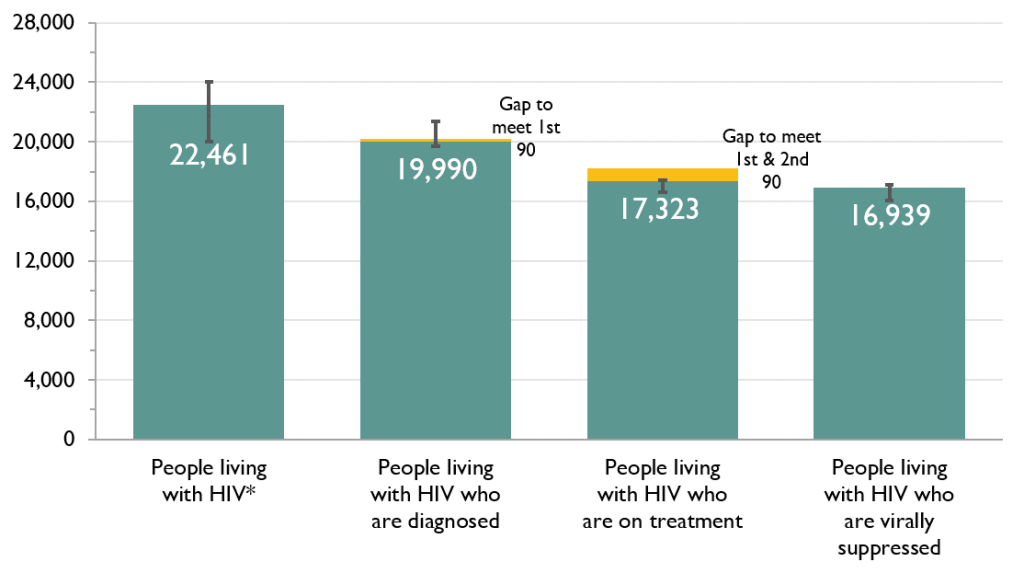
HIV Care Cascade for Ontario
Analyzing HIV care cascade data in Ontario is critical to understanding our successes and ongoing challenges in meeting HIV care cascade targets. In 2020, an estimated 22,461 people were living with HIV in Ontario (*modelling by PHAC). Of these, an estimated 19,990 people knew their HIV status (i.e. were diagnosed). 17,323 people were on anti-retroviral treatment (ART), and 16,939 people were virally suppressed (<200 copies/ml).
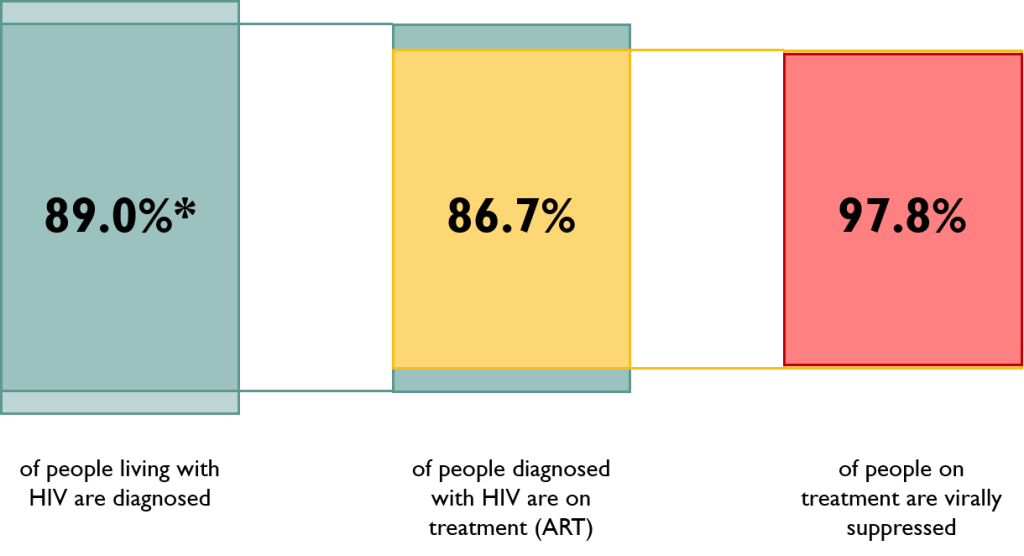
UNAIDS 90-90-90 Targets for Ontario
In 2020, Ontario made progress compared to previous years on the UNAIDS 90s targets, with 89.0% of people living with HIV diagnosed (*modelling by PHAC), 86.7% of people diagnosed on treatment (ART), and 97.8% of people on treatment (ART) were virally suppressed. Progress is necessary on the first two 90’s in order to meet the targets.
